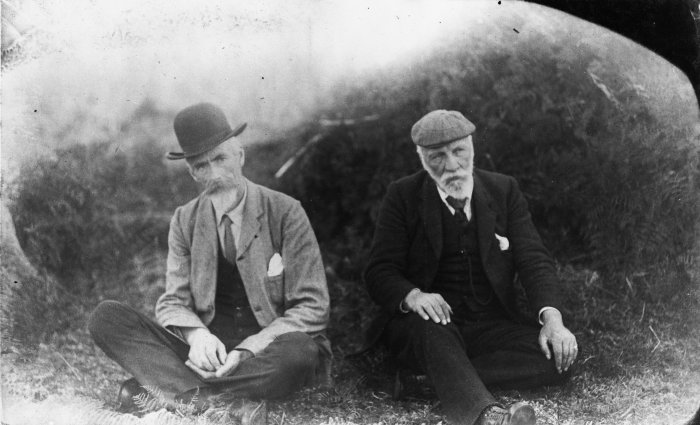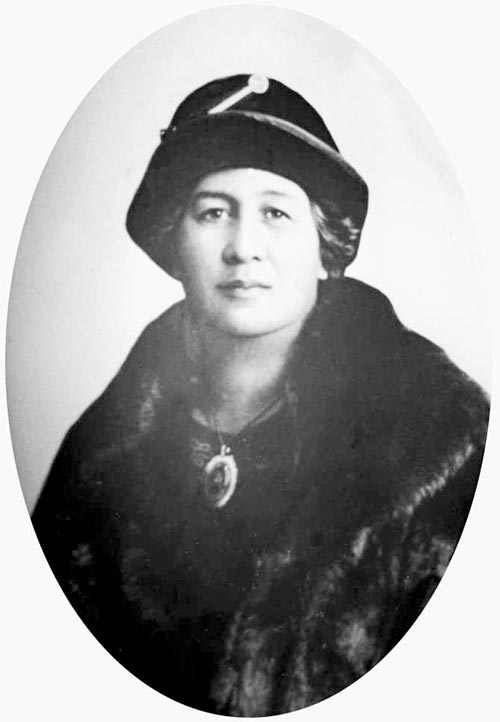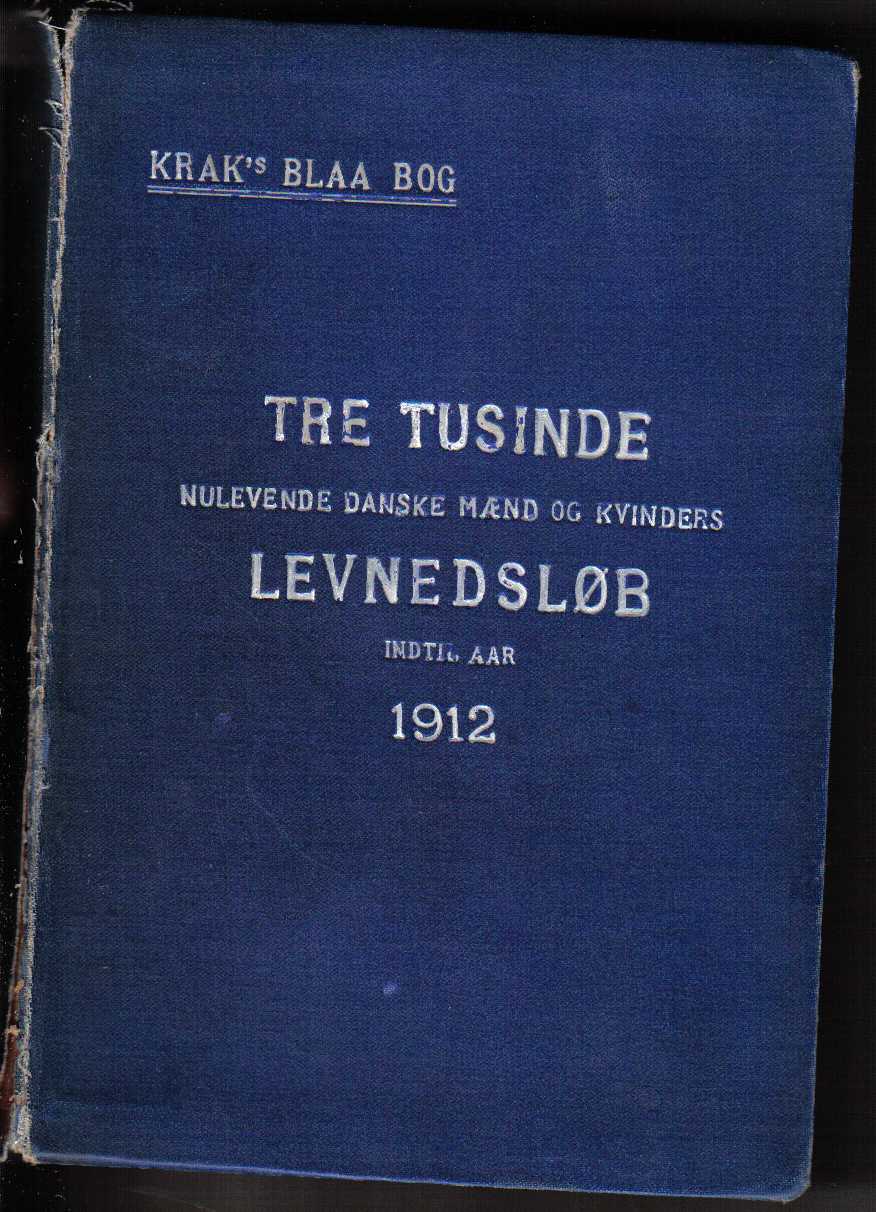|
Herbert Williams (bishop)
Herbert William Williams (10 October 1860 – 7 December 1937) was the 6th Anglican Bishop of Waiapu and a distinguished Māori scholar. Williams was born at Waerenga-ā-Hika, Gisborne, New Zealand, the son of Sarah Williams and Leonard Williams. He was educated at Christ's College, Christchurch, The University of New Zealand and Jesus College, Cambridge; graduating Bachelor of Arts (BA) in 1884. He was ordained in 1886, then embarked on his ecclesiastical career with a curacy at West Wratting, Cambridge diocese, Ely from 1886-1888. Williams married Bertha Mason on 27 September 1888 in Edinburgh, Scotland. Their children include Nigel Williams (a priest; 23 March 1901 – 25 July 1980). He was a member of the Church Missionary Society (CMS). From March 1890 to 1894 he was a tutor at Te Rau Kahikatea Theological College, which had been established in Gisborne by his father, Leonard Williams. He became the vice-principal in 1894, and from 1894 to 1902 he was the principal of t ... [...More Info...] [...Related Items...] OR: [Wikipedia] [Google] [Baidu] |
Bishop Of Waiapu
The Diocese of Waiapu is one of the thirteen dioceses and hui amorangi of the Anglican Church in Aotearoa, New Zealand and Polynesia. The Diocese covers the area around the East Coast of the North Island of New Zealand, including Tauranga, Taupo, Gisborne, Hastings and Napier. It is named for the Waiapu River. The diocese was established in 1858. The seat of the Bishop is the Waiapu Cathedral of Saint John the Evangelist, Napier. William Williams was appointed the first Bishop of Waiapu. His son, Leonard Williams, and grandson, Herbert Williams, also held the position. The most recently departed Bishop of Waiapu was David Rice, who was Bishop of Waiapu from 2008–2014, and who departed to become Bishop of San Joaquin in California. Andrew Hedge is the current bishop, having been installed on St Luke's Day, 18 October 2014. Bishops * 1859–1876: William Williams * 1877–1894: Edward Stuart * 1895–1909: Leonard Williams * 1910–1914: Alfred Averill * 1914–1 ... [...More Info...] [...Related Items...] OR: [Wikipedia] [Google] [Baidu] |
Curacy
A curate () is a person who is invested with the ''care'' or ''cure'' (''cura'') ''of souls'' of a parish. In this sense, "curate" means a parish priest; but in English-speaking countries the term ''curate'' is commonly used to describe clergy who are assistants to the parish priest. The duties or office of a curate are called a curacy. Etymology and other terms The term is derived from the Latin ''curatus'' (compare Curator). In other languages, derivations from ''curatus'' may be used differently. In French, the ''curé'' is the chief priest (assisted by a ''vicaire'') of a parish, as is the Italian ''curato'', the Spanish ''cura'', and the Filipino term ''kura paróko'' (which almost always refers to the parish priest), which is derived from Spanish. Catholic Church In the Catholic Church, the English word "curate" is used for a priest assigned to a parish in a position subordinate to that of the parish priest. The parish priest (or often, in the United States, the "pastor ... [...More Info...] [...Related Items...] OR: [Wikipedia] [Google] [Baidu] |
Polynesian Society
The Polynesian Society is a non-profit organisation based at the University of Auckland, New Zealand, dedicated to the scholarly study of the history, ethnography, and mythology of Oceania. History The society was co-founded in 1892 by Percy Smith and Edward Tregear, largely in response to a conviction, widely held at the time, that the Māori and other Polynesian peoples were a dying race. Smith and his friends hoped that it would help to preserve the traditional lore of the Māori before it disappeared and provide scholars with a forum for learned discussion of their ethnographic research (Byrnes 2006). The initial membership of the society was 112, which had grown to 1,300 by 1965. Presidents have included bishops H. W. and W. L. Williams; James Pope, Edward Tregear, Percy Smith, Elsdon Best, William Skinner, Sir Āpirana Ngata, Harry Skinner, J. M. McEwen, Professor Sir Hugh Kawharu and Dame Joan Metge. The present president is Dr Richard Benton. Until her death in ... [...More Info...] [...Related Items...] OR: [Wikipedia] [Google] [Baidu] |
Royal Society Te Apārangi
The Royal Society Te Apārangi (in full, Royal Society of New Zealand Te Apārangi) is an independent, statutory not-for-profit body in New Zealand providing funding and policy advice in the fields of sciences and the humanities. History The Royal Society was founded in 1867 as the New Zealand Institute, a successor to the New Zealand Society, which had been founded by Sir George Grey in 1851. The Institute, established by the New Zealand Institute Act 1867, was an apex organisation in science, with the Auckland Institute, the Wellington Philosophical Society, the Philosophical Institute of Canterbury, and the Westland Naturalists' and Acclimatization Society as constituents. It later included the Otago Institute and other similar organisations. The Colonial Museum (later to become the Dominion Museum and then the Museum of New Zealand Te Papa Tongarewa), which had been established two years earlier, in 1865, was granted to the New Zealand Institute. Publishing transactions an ... [...More Info...] [...Related Items...] OR: [Wikipedia] [Google] [Baidu] |
Āpirana Ngata
Sir Āpirana Turupa Ngata (3 July 1874 – 14 July 1950) was a prominent New Zealand statesman. He has often been described as the foremost Māori politician to have served in Parliament in the mid-20th century, and is also known for his work in promoting and protecting Māori culture and language. Ngata practiced as a lawyer before entering politics in 1897, when he established the Young Māori Party alongside numerous alumni of Te Aute College, including future fellow cabinet minister Māui Pōmare. Here he challenged the traditional views of his people, advocating the abandonment of some traditional practices and customary healing in favour of science and Pākehā-style sanitation, which made him a controversial figure. In 1905, he was elected the Liberal Member of Parliament (MP) for Eastern Maori, retaining this seat for nearly 40 years. He served in government as Minister of Native Affairs from 1928 to 1934. In this he tried to accomplish as many reforms for Māori as ... [...More Info...] [...Related Items...] OR: [Wikipedia] [Google] [Baidu] |
Waiapu Cathedral Of Saint John The Evangelist, Napier
The Waiapu Cathedral of Saint John the Evangelist, Napier, is the formal name of the Anglican Cathedral of the Diocese of Waiapu. It is more commonly called either Waiapu Cathedral or Napier Cathedral. The Waiapu cathedral is situated at the north end of the central business district of Napier, New Zealand. Construction of the present building was completed 1965, and the cathedral was consecrated on 8th October 1967. It is built in an Art Deco style. The church has the unusual distinction of hosting the cathedrae of both the Bishop of Waiapu and of ''Te Pihopa o Aotearoa''/Bishop of Aotearoa (currently Don Tamihere). This is a distinctive aspect of Waiapu Cathedral (differing from St Anne's Cathedral, Belfast, which also serves two dioceses but is the seat of neither). History The present-day building replaced an earlier cathedral that was destroyed by the 1931 Hawke's Bay earthquake. Begun in 1886, consecrated in December 1888, and largely complete by 1890, the original ca ... [...More Info...] [...Related Items...] OR: [Wikipedia] [Google] [Baidu] |
A & C Black
A & C Black is a British book publishing company, owned since 2002 by Bloomsbury Publishing. The company is noted for publishing '' Who's Who'' since 1849. It also published popular travel guides and novels. History The firm was founded in 1807 by Charles and Adam Black in Edinburgh. In 1851, the company purchased the copyrights to Sir Walter Scott's ''Waverly'' novels for £27,000. The company moved to the Soho district of London in 1889. During the years 1827–1903 the firm published the seventh, eighth and ninth editions of the ''Encyclopædia Britannica''. This was purchased from Archibald Constable after his company's failure to publish the seventh edition of the encyclopedia. Adam Black retired in 1870 due to his disapproval of his sons' extravagant plans for its ninth edition. This edition, however, would sell half a million sets and was released in 24 volumes from 1875 to 1889. Beginning in 1839, the firm published a series of travel guides known as ''Black's Guide ... [...More Info...] [...Related Items...] OR: [Wikipedia] [Google] [Baidu] |
Who's Who
''Who's Who'' (or ''Who is Who'') is the title of a number of reference publications, generally containing concise biography, biographical information on the prominent people of a country. The title has been adopted as an expression meaning a group of notable persons. The oldest and best-known is the annual publication ''Who's Who (UK), Who's Who'', a reference work on contemporary prominent people in Britain published annually since 1849. In addition to legitimate reference works, some ''Who's Who'' lists involve the selling of "memberships" in fraudulent directories that are created online or through instant publishing services. AARP, the University at Buffalo and the Government of South Australia have published warnings of these ''Who's Who'' scams. Notable examples by country * ''Who's Who (UK), Who's Who'', the oldest listing of prominent British people since 1849; people who have died since 1897 are listed in ''Who Was Who.'' * ''Cambridge Who's Who'' (also known as ''Wor ... [...More Info...] [...Related Items...] OR: [Wikipedia] [Google] [Baidu] |
Episcopate
A bishop is an ordained clergy member who is entrusted with a position of authority and oversight in a religious institution. In Christianity, bishops are normally responsible for the governance of dioceses. The role or office of bishop is called episcopacy. Organizationally, several Christian denominations utilize ecclesiastical structures that call for the position of bishops, while other denominations have dispensed with this office, seeing it as a symbol of power. Bishops have also exercised political authority. Traditionally, bishops claim apostolic succession, a direct historical lineage dating back to the original Twelve Apostles or Saint Paul. The bishops are by doctrine understood as those who possess the full priesthood given by Jesus Christ, and therefore may ordain other clergy, including other bishops. A person ordained as a deacon, priest (i.e. presbyter), and then bishop is understood to hold the fullness of the ministerial priesthood, given responsibility by ... [...More Info...] [...Related Items...] OR: [Wikipedia] [Google] [Baidu] |
William Williams (bishop)
:''To be distinguished from William Williams (missionary) (1859–1892) in Khasi Hills India'' William Williams (18 July 1800 – 9 February 1878) was consecrated as the first Anglican Bishop of Waiapu, New Zealand, on 3 April 1859 by the General Synod at Wellington. His son, Leonard Williams became the third Bishop of Waiapu and his grandson, Herbert Williams, the sixth. His brother, the Rev. Henry Williams, led the Church Missionary Society (CMS) mission in New Zealand. William Williams led the CMS missionaries in translating the Bible into Māori and published an early dictionary and grammar of the Māori language. Early life Williams was born in Nottingham to Thomas and Mary Williams on 18 July 1800. His paternal grandfather was the Reverend Thomas Williams (1725–1770), a Congregational minister at the Independent Chapel of Gosport. After the death of William's father in 1804, his mother moved with her younger children to Southwell, Nottinghamshire, where she opened ... [...More Info...] [...Related Items...] OR: [Wikipedia] [Google] [Baidu] |
Archdeacon
An archdeacon is a senior clergy position in the Church of the East, Chaldean Catholic Church, Syriac Orthodox Church, Anglican Communion, St Thomas Christians, Eastern Orthodox churches and some other Christian denominations, above that of most clergy and below a bishop. In the High Middle Ages it was the most senior diocesan position below a bishop in the Catholic Church. An archdeacon is often responsible for administration within an archdeaconry, which is the principal subdivision of the diocese. The ''Oxford Dictionary of the Christian Church'' has defined an archdeacon as "A cleric having a defined administrative authority delegated to him by the bishop in the whole or part of the diocese.". The office has often been described metaphorically as that of ''oculus episcopi'', the "bishop's eye". Roman Catholic Church In the Latin Catholic Church, the post of archdeacon, originally an ordained deacon (rather than a priest), was once one of great importance as a senior o ... [...More Info...] [...Related Items...] OR: [Wikipedia] [Google] [Baidu] |
Lectionary
A lectionary ( la, lectionarium) is a book or listing that contains a collection of scripture readings appointed for Christianity, Christian or Judaic worship on a given day or occasion. There are sub-types such as a "gospel lectionary" or evangeliary, and an :wikt:epistolary, epistolary with the readings from the New Testament Epistles. History The Talmud claims that the practice of reading appointed Scriptures on given days or occasions dates back to the time of Moses and began with the annual religious festivals of Passover, Pentecost, and the Feast of Tabernacles (Talmud, ''Megilah 32a''). The Mishnah portion of the Talmud, probably finished in the early 3rd century AD/CE (''Anno'' ''Domini'' or Common Era) contains a list of Torah readings for various occasions (Talmud, ''Megilah 32a'') and assumes that these special readings interrupt a regular schedule of Torah readings (Talmud, ''Megilah 29a, 30b''). In addition to these Torah readings, the later Gemara portion of the Ta ... [...More Info...] [...Related Items...] OR: [Wikipedia] [Google] [Baidu] |



.jpg)




